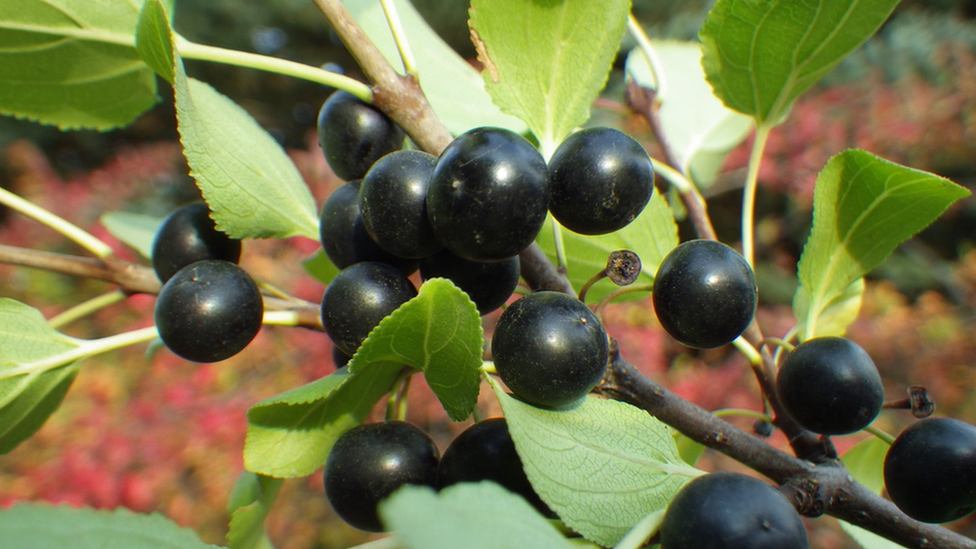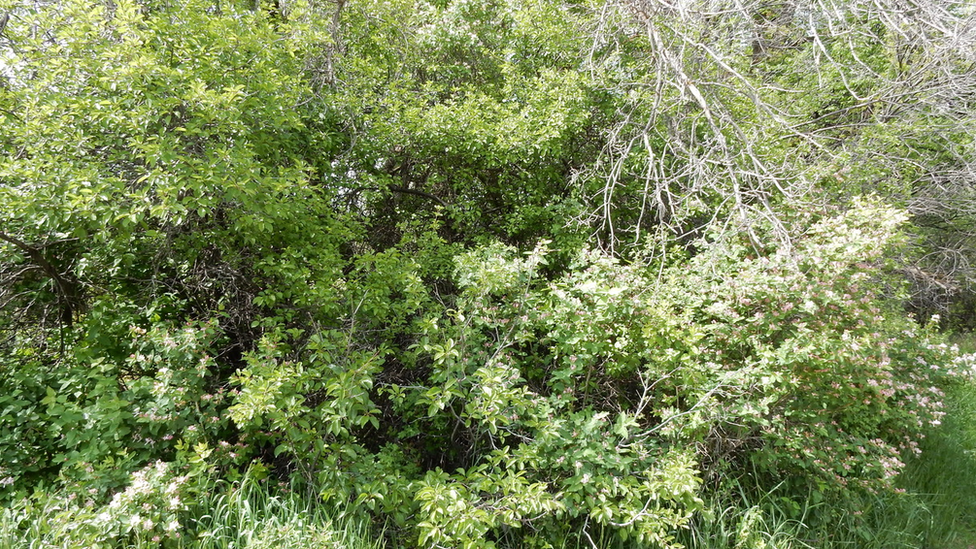Forests 'can take cover to resist alien invaders'
- Published

Invasive species, such as buckthorn, can cost millions of dollars to control
Native woodlands can resist the spread of invasive species by blocking daylight reaching the forest floor, researchers have suggested.
They found the amount of light available in the spring and the autumn was "critical" for buckthorn, an alien invasive species in North America.
Invasive species dominate a local habitat and squeeze out native species and cost a vast sum to control.
The findings appear in the Forest Ecology and Management journal.
The team, comprising researchers from US and Australian universities, decided to focus its attention on common buckthorn (Rhamnus cathartica), which is an invasive shrub species in North America.
It out-competes native plants and degrades soils and forests, to the detriment of humans and other wildlife.
Uninvited guest
"In Minnesota alone, we spend millions of dollars each year managing buckthorn invasions and lose much more in the form of reduced forest quality," said co-author Michael Schuster from the Department of Forest Resources at the University of Minnesota.
Dr Schuster explained that in order to create environments that resist invasion by buckthorn, and thus avoid those costs and impacts of the natural capital, it was necessary to understand which forest characteristics offered the greatest influence on the success or failure of buckthorn plants becoming established.
"Canopy structure determines a lot about the conditions experienced by invading buckthorn, so we asked how changes in the composition of forest canopies might make those forests more or less vulnerable to buckthorn invasions," he told BBC News.

Buckthorn's dense foliage can prevent native floor-dwelling species from thriving
In their experiment, the team grew buckthorn seedlings under a variety of different canopies and measured the light available to the seedlings.
These included one made up from deciduous species, such as birch, another from evergreen species, such as pine, and another from a mixture of deciduous and evergreen species.
At the end of the three-year experiment, Dr Schuster observed: "Using these observations in combination with a statistical model of forest light availability, we showed that forests that are able to block out 96% of incoming light in the spring or autumn can successfully resist buckthorn invasion."
He added that, in general, evergreen species were much more capable of creating this level of shade compared with deciduous species.
"We anticipated that buckthorn would fail in areas with extremely low light levels, since having some light is necessary for [most] plants to live," he said.
Spring sunshine
Yet the team were surprised by how much the buckthorn seedlings depended upon light availability in the spring or autumn.
"Light availability in the spring and autumn was massively influential compared with mid-summer light," explained Dr Schuster.
"Whether a canopy produced a lot of shade in the summer or none at all, it really did not make much of a difference.
"For buckthorn, it was all about the spring and autumn."
Phenology - the study of the seasons, especially regarding how it affects wildlife, such as flowering and nesting/hatching times - has a long history stretching back to the 19th Century.
It is widely accepted that changes to the seasons affect the natural equilibrium in the natural world.
Dr Schuster and colleagues' study showed that there were "critical windows' of opportunity for buckthorn at the beginning and end of growing seasons.
"Certain forest types may be inherently vulnerable to invasion by buckthorn as a consequence of when they gain and lose their leaves," he said.
He added that if forest managers were seeking to improve the long-term resistance of their forests to buckthorn invasions then it might be necessary to introduce species that helped reduce the amount of light reaching the forest floor but historically were not present in the area, such as evergreens.
But this approach was not risk-free, warned Dr Schuster.
"For example, many oak forests in our region may simply lack the capacity to resist buckthorn - they leaf in late spring and create understories that do not get particularly dark," he observed.
But, he added: "If we change forests to have phenologies that exclude buckthorn, we may inadvertently push out some desirable native species at the same time.
"So, the question becomes whether we can curate plant communities to both have the species we want and also to produce ample shade in the spring and autumn to keep buckthorn out."
The team is currently investigating how to create dense shading in order to exclude buckthorn using a mixture of native plant species.
Success will help protect vulnerable native plants and animals in the future, and help curb the ever growing cost of tackling the relentless march of invasive species.